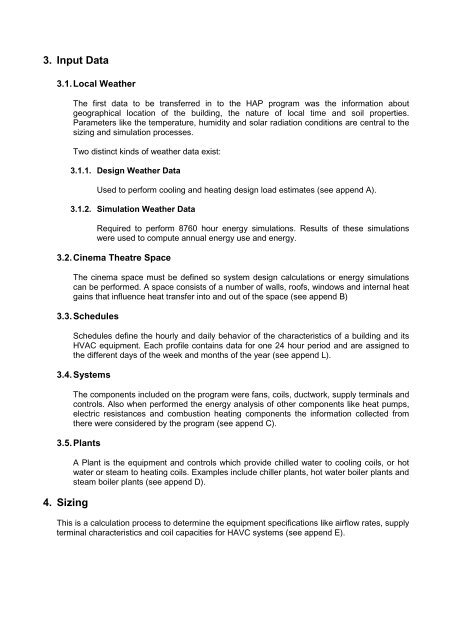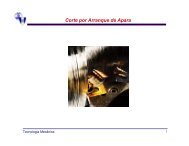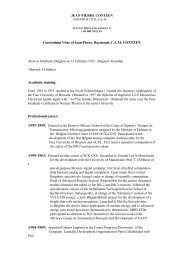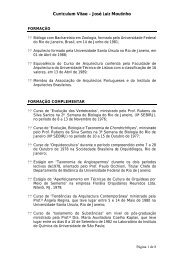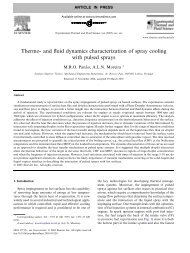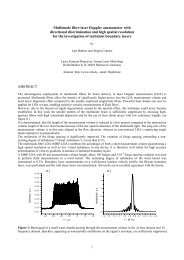Master in Engineering Design 1. Introduction. 2. Work Description - In+
Master in Engineering Design 1. Introduction. 2. Work Description - In+
Master in Engineering Design 1. Introduction. 2. Work Description - In+
Create successful ePaper yourself
Turn your PDF publications into a flip-book with our unique Google optimized e-Paper software.
3. Input Data<br />
3.<strong>1.</strong> Local Weather<br />
The first data to be transferred <strong>in</strong> to the HAP program was the <strong>in</strong>formation about<br />
geographical location of the build<strong>in</strong>g, the nature of local time and soil properties.<br />
Parameters like the temperature, humidity and solar radiation conditions are central to the<br />
siz<strong>in</strong>g and simulation processes.<br />
Two dist<strong>in</strong>ct k<strong>in</strong>ds of weather data exist:<br />
3.<strong>1.</strong><strong>1.</strong> <strong>Design</strong> Weather Data<br />
Used to perform cool<strong>in</strong>g and heat<strong>in</strong>g design load estimates (see append A).<br />
3.<strong>1.</strong><strong>2.</strong> Simulation Weather Data<br />
Required to perform 8760 hour energy simulations. Results of these simulations<br />
were used to compute annual energy use and energy.<br />
3.<strong>2.</strong> C<strong>in</strong>ema Theatre Space<br />
The c<strong>in</strong>ema space must be def<strong>in</strong>ed so system design calculations or energy simulations<br />
can be performed. A space consists of a number of walls, roofs, w<strong>in</strong>dows and <strong>in</strong>ternal heat<br />
ga<strong>in</strong>s that <strong>in</strong>fluence heat transfer <strong>in</strong>to and out of the space (see append B)<br />
3.3. Schedules<br />
Schedules def<strong>in</strong>e the hourly and daily behavior of the characteristics of a build<strong>in</strong>g and its<br />
HVAC equipment. Each profile conta<strong>in</strong>s data for one 24 hour period and are assigned to<br />
the different days of the week and months of the year (see append L).<br />
3.4. Systems<br />
The components <strong>in</strong>cluded on the program were fans, coils, ductwork, supply term<strong>in</strong>als and<br />
controls. Also when performed the energy analysis of other components like heat pumps,<br />
electric resistances and combustion heat<strong>in</strong>g components the <strong>in</strong>formation collected from<br />
there were considered by the program (see append C).<br />
3.5. Plants<br />
4. Siz<strong>in</strong>g<br />
A Plant is the equipment and controls which provide chilled water to cool<strong>in</strong>g coils, or hot<br />
water or steam to heat<strong>in</strong>g coils. Examples <strong>in</strong>clude chiller plants, hot water boiler plants and<br />
steam boiler plants (see append D).<br />
This is a calculation process to determ<strong>in</strong>e the equipment specifications like airflow rates, supply<br />
term<strong>in</strong>al characteristics and coil capacities for HAVC systems (see append E).


